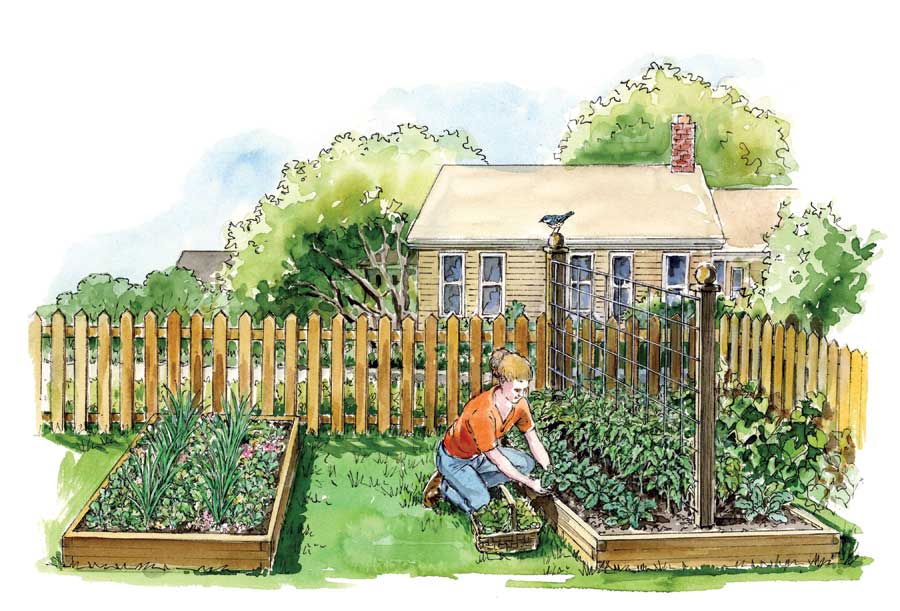Among the many benefits of companion planting, the most important one is that they attract beneficial insects to your garden. Also, if you have unwanted insects, you can use companions to help trap pests, repel them, or hide the affected plant. Many plants grow well together because they don’t fight each other for resources like sunlight or space.
Repel pests with companion planting
Some plants act as natural pesticides and help to deter garden pests and can also be used to attract pollinators. For instance, the roots of marigold produce a substance that inhibits the growth of weeds and soil pests. To get this effect, use varieties of French Marigold and African Marigold in your garden.
Crops like onion and garlic also repel pests. Their aroma is used to mask the scent of the main crop and make it invisible to the pests.
Some plants are used for “trap cropping,” and are sacrificed to draw pests away from the main crop. Nasturtium is often planted with roses and lettuce to lure aphids away. Chervil will draw slugs away from the leafy greens growing in your garden, and dill is loved by the tomato hornworm.
Here are some of your favorite vegetables and their companion plants
Beans
- Cabbage (improve soil and yields); Carrots (improve the soil); Cucumbers (improve yields); Marigolds (deter pests); Potatoes (protects the bean against the Mexican bean beetle); Tomato (acts as a support plant).
- Bad neighbors for beans – fennel, garlic, leeks, onions or shallots.
Pepper
- Basil (which deters pests); Chives (act as a pollinator; deter unwanted pests and prevent disease); Chamomile (improves the flavor and health of the plant); Marigold (improves plant health and soil health); Garlic (it’s strong scent deters pests and prevents disease); Nasturtium (great pollinator, it deters pests and acts as a trap crop); Oregano (deters pests and acts as a pollinator); Sunflower (it acts as a shelter crop, helping to pollinate and support plants); Yarrow (supplies nutrients to the soil, improves plant and soil health).
- Bad neighbors for peppers – beans, fennel, and kohlrabi.
Cucumber
- Beans (supply nutrients to the soil and also improve yields); Chamomile (improves the flavor and it improves overall health); Coriander (attracts pollinators and deters pests); Corn (acts as a support and shelter crop); Dill (deters pests); Nasturtium (trap crop, deterring pests and aiding with pollination); Oregano (a beneficial pollinator); Sunflower (attracts pollinators).
- Bad neighbors for cucumber – sage and potato.
Tomato
- Beans (supply nutrients to the soil around tomatoes. They also improve yields); Borage (it will help suppress weeds and improves the health for the plants around it); Chives (great pollinators and are known to help prevent disease); Nasturtium (trap crop and aids with pollination); Oregano (beneficial pollinator); Sage (a shelter crop for tomatoes, protecting it from water damage); Sunflower (attracts pollinators and acts as a support and shelter crop).
- Bad neighbors for tomato – dill, fennel, potatoes, kohlrabi and corn.
Potato
- Bush beans; Celery; Corn; Garlic; Marigold; Onion; Peas; Radish; Cabbage; Eggplant; Kale; Lettuce
- Bad neighbors for potato – asparagus, carrots, cucumber, kohlrabi, melons, tomato, parsnips, squash, turnip, sunflower and sweet potato.
Pumpkin
- Beans (supply nutrients to the soil and also improve yields); Chamomile will improve the flavor and overall health); Coriander (is a beneficial plant attracting pollinator and deterring pests); Corn (acts as a support and shelter crop); Dill (with its scented leaves, deters pests); Nasturtium (trap crop, deterring pests and aiding with pollination); Oregano; Radishes; Sunflower (attracts pollinators).
- Bad neighbors for pumpkin – sage or potato
Source: rockinwhomestead.com
Image source: www.motherearthnews.com

